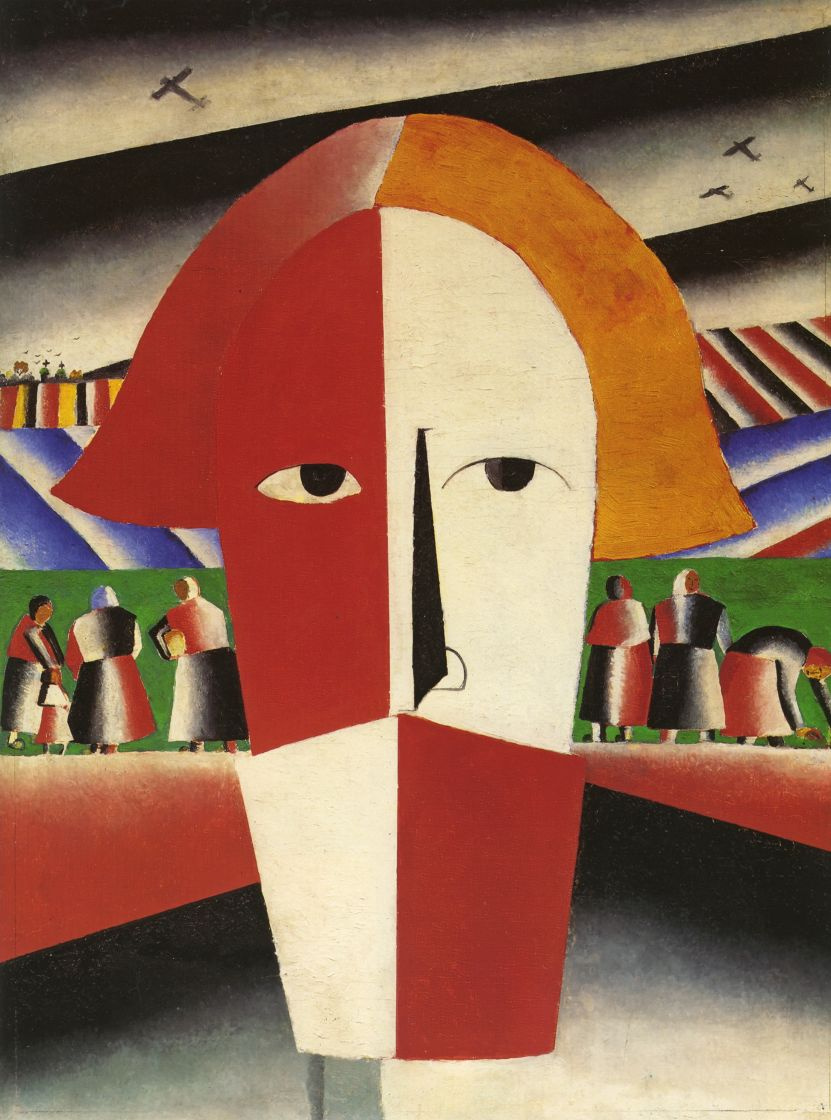log in
Enter site
Login to use Arthive functionality to the maximum
Head of a peasant
Kazimir Malevich • Painting, 1929, 71.7×53.8 cm
Description of the artwork «Head of a peasant»
In early 1920s, Kazimir Malevich focused on how to carry the ideas of Suprematism to the masses, and after 1923 he almost completely stopped to paint (but for his articles, treatises and manifestos). The artist taught in Vitebsk, Leningrad and Kiev. Throughout this time, the relationship of Kazimir Severinovich with the authorities continued to get worse. He was dismissed from his posts under various pretexts, he was arrested. Hardly managing to gain fame and recognition, Malevich was again in opposition to the official path, which his colleagues were forced to follow. The artist remained, without exaggeration, a cult figure. Students and fans of his work accepted his every word unconditionally, and if it got into his head, for example, to arrange a performance with the mass suicide, he would surely have many followers.
In the end, Kazimir Severinovich was deprived of the opportunity to teach, and then, realizing that the omnipresent socialist realism was not his path, he took up painting again, regardless of anyone or anything. In one of his letters of that period, Malevich wrote, "I'm thinking of going back to painting with the aim to create symbolic pictures. I want to create an image that would be effective". Since 1929, he has been creating a new series of paintings with farmers as the subjects (1, 2, 3). Following the habit of reshaping his own biography, Malevich dated some of his paintings to 1910s. Later analysis, however, allowed us to determine that those works were painted in the early 30's. One of his most famous paintings , "Head of a peasant", also belongs to this period.
Malevich`s new peasant can hardly be called as happy or peaceful. His fate is unenviable and bitter as the fate of a great many villagers in those years. One can see the silhouettes of rural buildings behind the peasant`s back, with the birds flying above them, and from the other side of the canvas the aircrafts are inexorably approaching as some harbingers of danger. The feeling of anguish and despair is emphasized by the sorrowful expression of the farmer`s eyes, taking us back to the icon traditions (as does the entire composition of the painting). In addition, Malevich allegedly deprives his subject of the voice, closing his mouth with a beard as an impermeable bandage. In his later paintings, the artist started to depersonalize the peasants, drawing their faces as empty ovals.
Written by Eugeniya Sydelnikova
In the end, Kazimir Severinovich was deprived of the opportunity to teach, and then, realizing that the omnipresent socialist realism was not his path, he took up painting again, regardless of anyone or anything. In one of his letters of that period, Malevich wrote, "I'm thinking of going back to painting with the aim to create symbolic pictures. I want to create an image that would be effective". Since 1929, he has been creating a new series of paintings with farmers as the subjects (1, 2, 3). Following the habit of reshaping his own biography, Malevich dated some of his paintings to 1910s. Later analysis, however, allowed us to determine that those works were painted in the early 30's. One of his most famous paintings , "Head of a peasant", also belongs to this period.
Malevich`s new peasant can hardly be called as happy or peaceful. His fate is unenviable and bitter as the fate of a great many villagers in those years. One can see the silhouettes of rural buildings behind the peasant`s back, with the birds flying above them, and from the other side of the canvas the aircrafts are inexorably approaching as some harbingers of danger. The feeling of anguish and despair is emphasized by the sorrowful expression of the farmer`s eyes, taking us back to the icon traditions (as does the entire composition of the painting). In addition, Malevich allegedly deprives his subject of the voice, closing his mouth with a beard as an impermeable bandage. In his later paintings, the artist started to depersonalize the peasants, drawing their faces as empty ovals.
Written by Eugeniya Sydelnikova


